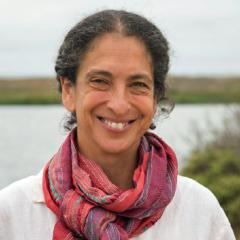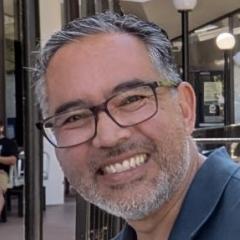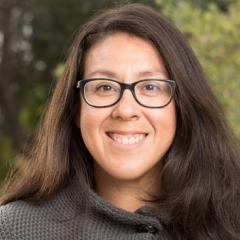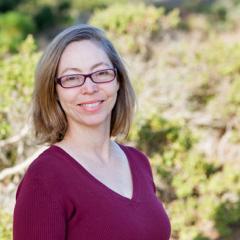Switzer Fellows southern California retreat – Inland Empire: A land of contradictions
I have just returned from another jam-packed Switzer Fellows retreat held in southern California the weekend of March 23-25, 2012. Over the last few years, as part of our ongoing outreach to Fellows and colleagues in the region, and our interest in showcasing leaders who are addressing the depth and complexity of interconnected environmental and social issues, this annual spring retreat is a perennial favorite of mine because it offers an opportunity to delve into a set of urgent environmental issues in southern California. In fact, how can we examine the environmental issues of California without including the social justice dimensions, the pressures on rare and threatened natural landscapes and the stark reality of growth in a water-limited future (let alone present!)?
We started the weekend with a Friday afternoon tour of the Rancho Santa Ana Botanical Garden where Switzer Fellow Naomi Fraga is working as Conservation Botanist and completing her PhD through Claremont College. A native herself of the Inland Empire, the region extending east from Los Angeles in and around Riverside and eastward to the desert, shared her wealth of knowledge about the Garden’s plantings, habitats and educational mission. On our Sunday hike, she guided us through natural grassland and oak savannah habitat on the Santa Ana Plateau south of Riverside. Chocolate lilies were in bloom there amidst the fresh grasses flowering on the plain.
The heart of the retreat was our day-long study tour which focused first on the extensive and long-term community organizing efforts of the Center for Community Action and Environmental Justice. Its founder and director, Penny Newman, was instrumental in drawing attention to the Stringfellow acid pits and the need for hazardous waste clean-up long before there were state and federal superfund laws. As a community member devoted to advocating on behalf of her community, she has fostered local leadership, primarily among women who are gaining strength and understanding of the disparities that exist in exposures to environmental risks – whether toxic pollution from hazardous waste, air pollution from trucks and railyards, or other health risks in their back yards. These articulate advocates are merging community organizing, partnerships with scientists, legal counsel and common sense to advance their cause, locally and at the state level.
Impacts from “goods movement” extends well beyond the ports of Los Angeles and Long Beach where over 50% of all goods imported into the US must pass. The proliferation of warehouses and rail yards from LA all the way into the Inland Empire illustrate not only the massive land requirements for infrastructure to handle this volume of goods, but also results in very limited economic opportunity for residents. Juan deLara, Assistant Professor in the Department of American Studies and Ethnicity at the University of Southern California explained the demographic shifts in this region and labor practices which favor temporary workers rather than economic opportunity with a future. I see the potential for Switzer Fellows working on the related issues of good movement, air quality, land use development and social equity to find synergies in their work and dedication to find solutions.
The afternoon of our study tour combined a visit to a fifth generation dry-farming (non-irrigated) winery with a visit to a state-of-the art water management agency. While the land base for the Galleano Winery is increasingly constrained by adjacent highways and warehousing, the indomitable spirit of Don Galleano to advocate for efficient water use was in abundance. So too was his love of the history of the place his family has farmed for generations and his generosity of spirit and dry-farmed zinfandel!
Following our time at Galleano, our colleague and former classmate of mine, Celeste Cantu, General Manager of the Santa Ana Water Management Authority (SAWPA), shared her vision for more efficient water use and water management in the Santa Ana River watershed. Her award winning program that encapsulates this vision, One Water, One Watershed, elicited her comment that “this should not be innovative, it should be common practice” and was indicative of her insight into the policy, science and community leadership she coordinates. Her policy perspective was useful to everyone, regardless of whether their expertise was water.
The time to share learning with each other while exploring the natural lands of the region gave all of us a chance to reflect on our inspiration from each other as well as spending time with humbling leaders. This kind of interaction can easily be a model for future gatherings, here and elsewhere. I want to thank Switzer fellows Nancy Steele, Francisco Donez, Jessica Hall and Naomi Fraga for their help in organizing and hosting the weekend.




